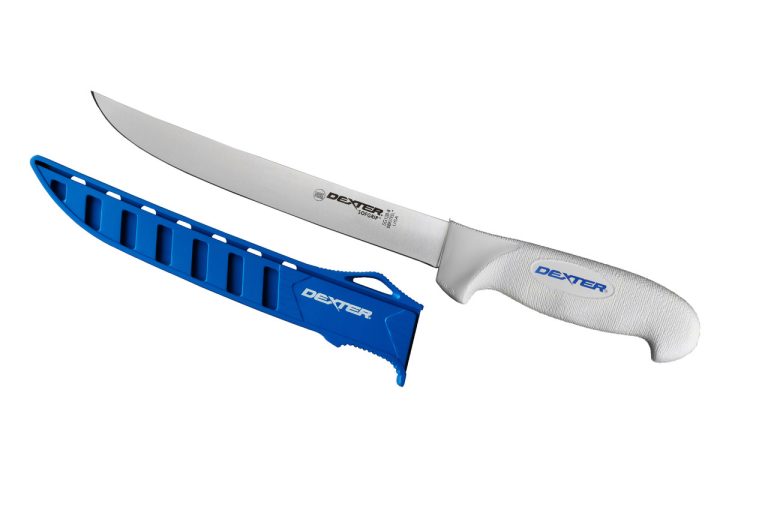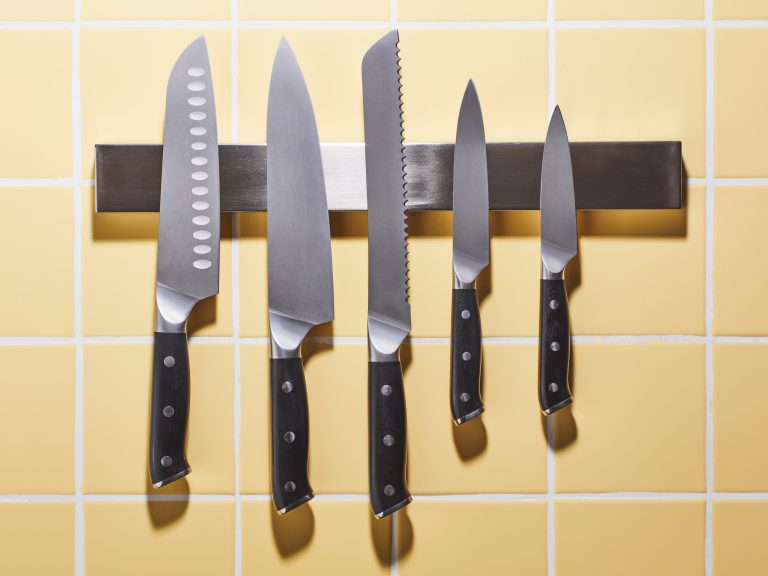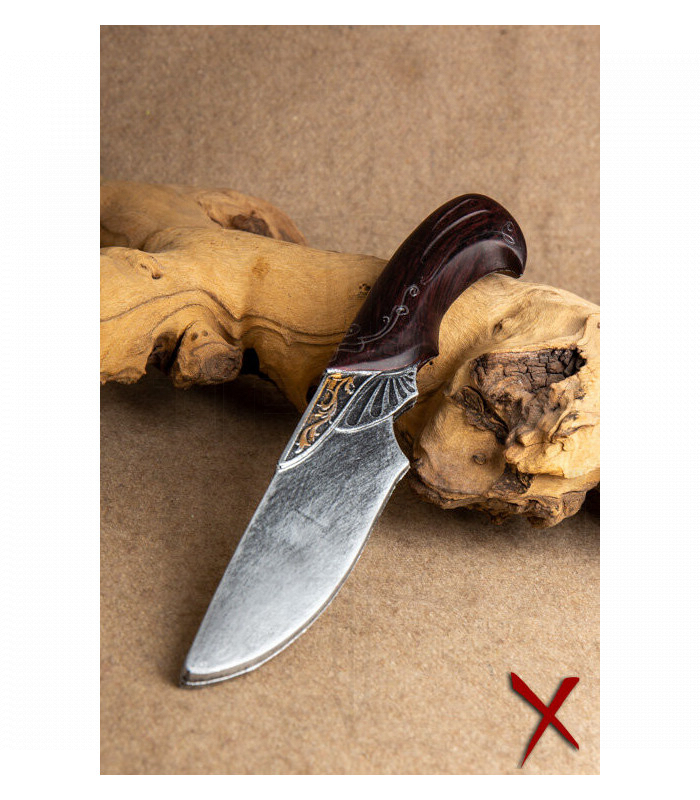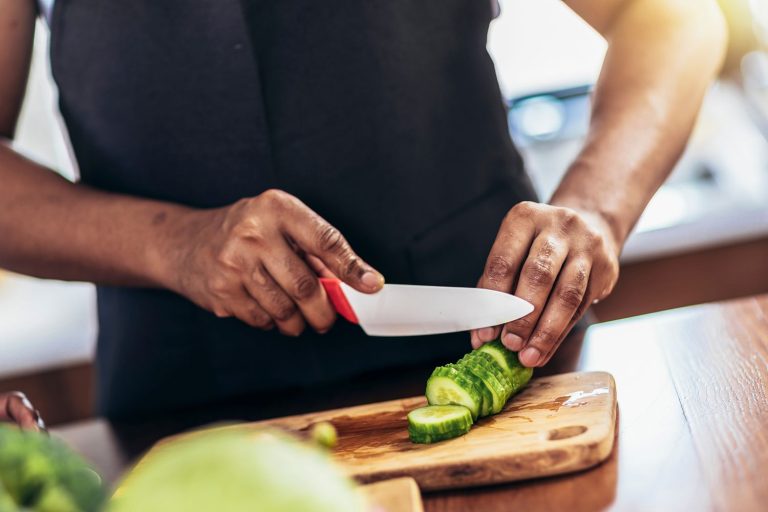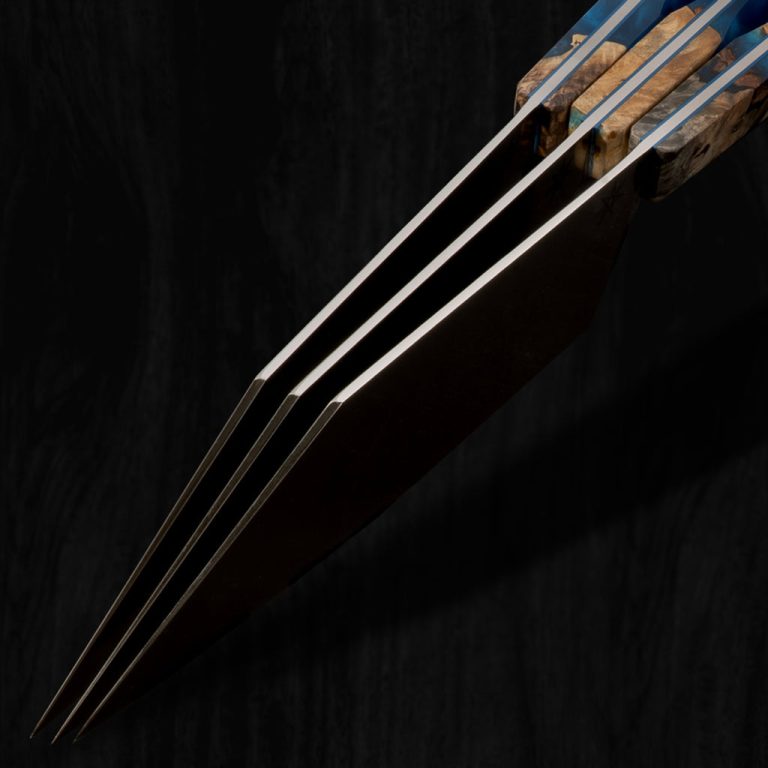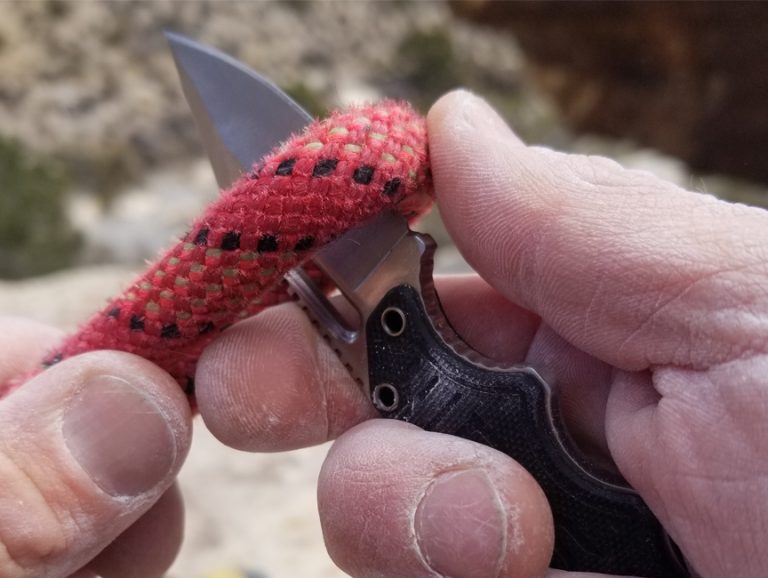Hunting Knives 101: Types, Blades, And Grips
Hunting knives come in various types, with different blades and grips to choose from. In this comprehensive guide, we will explore the features and functionalities of hunting knives to help you make an informed decision.
Whether you are a seasoned hunter or a beginner, understanding the different types of blades and grips available can greatly enhance your hunting experience. From fixed blades to folding knives, each type offers unique advantages depending on your specific needs and preferences.
By exploring the various knife types, blade materials, and grip designs, you can select the perfect hunting knife that suits your style, purpose, and environment. So let’s dive into the world of hunting knives and explore their fascinating features.
Types Of Hunting Knives
Discover the various types of hunting knives, including their blades and grips, in this informative guide. From fixed blades to folding knives, explore the options for your next hunting adventure.
Folding Knives
Folding knives are a popular choice among hunters due to their compactness and portability. These knives are designed with a hinge that allows the blade to be folded into the handle, making them convenient to carry in a pocket or backpack.
Here are some key points to consider about folding knives for hunting:
- Versatility: Folding knives offer versatility in terms of blade selection, allowing hunters to choose from various options such as drop point, clip point, or tanto blades. This versatility enables them to handle a wide range of tasks in the field, including field dressing, skinning, and survival situations.
- Ease of carry: Because they can be folded and stowed away, folding knives are easy to carry and store. This makes them a convenient choice for hunters who prioritize portability and prefer a compact tool that can be readily accessed when needed.
- Safety features: Folding knives often come with locking mechanisms that securely hold the blade in place, reducing the risk of accidental closures during use. The lock ensures that the blade remains firm and stable, providing hunters with confidence and peace of mind.
- Convenient one-handed operation: Many folding knives feature a one-handed opening mechanism, typically a thumb stud or a flipper, allowing hunters to open the knife quickly and easily while holding onto other objects or using their dominant hand for added stability.
Popular Folding Knives For Hunting
When it comes to choosing a folding knife for hunting, there are several popular options available in the market. Here are a few renowned folding knives that are highly regarded among hunters:
- Benchmade Griptilian: Known for its quality craftsmanship, the Benchmade Griptilian offers a durable and versatile folding knife with a variety of blade options. Its ergonomic handle provides a comfortable grip, and its reliable locking mechanism ensures safe usage.
- Buck Knives 110 Folding Hunter: A classic design, the Buck Knives 110 Folding Hunter is a timeless folding knife trusted by generations of hunters. With a sturdy construction and a reliable lock-back mechanism, this knife is a popular choice for hunting enthusiasts.
- Spyderco Paramilitary 2: Recognized for its high-quality materials and excellent performance, the Spyderco Paramilitary 2 is a top-tier folding knife for hunting. Its ergonomic design, reliable deployment system, and robust locking mechanism make it a favorite among outdoor enthusiasts.
Fixed Blade Knives
In contrast to folding knives, fixed blade knives have a blade that extends from the handle in a solid, fixed position. These knives offer several advantages that make them a popular choice for many hunters. Let’s explore some of the benefits of using fixed blade knives for hunting:
- Strength and durability: Fixed blade knives are known for their strength and durability, as they lack moving parts that could potentially fail. This makes them ideal for heavy-duty tasks such as field dressing, quartering, and chopping.
- Easy maintenance: With no hinges or locking mechanisms to worry about, fixed blade knives are relatively easy to clean and maintain. A simple rinse and wipe down after use are usually sufficient to keep the blade in good condition.
- Full tang construction: Many fixed blade knives feature a full tang construction, where the blade extends the entire length of the handle. This design provides optimal strength and stability, making the knife more reliable and suitable for rigorous hunting activities.
- Enhanced cutting power: Fixed blade knives typically have a larger cutting surface compared to folding knives, allowing for more efficient and powerful cuts. This makes them particularly useful for tasks that require forceful slicing, such as field dressing.
Top Fixed Blade Knives For Hunting
For hunters seeking reliable fixed blade knives, there are several top-notch options available in the market. Here are some highly recommended fixed blade knives that have earned a solid reputation among hunting enthusiasts:
- Gerber StrongArm: Designed for versatility and durability, the Gerber StrongArm features a full tang blade made from high-quality stainless steel. With its ergonomic handle and rugged sheath, this knife is well-suited for various hunting scenarios.
- ESEE 5: Known for its ruggedness and reliability, the ESEE 5 is a popular choice for hunters looking for a robust fixed blade knife. Its 1095 carbon steel blade and comfortable grip make it an excellent tool for heavy-duty tasks.
- Benchmade Hidden Canyon Hunter: Compact yet mighty, the Benchmade Hidden Canyon Hunter offers a small fixed blade knife that packs a punch. Its high-quality blade material and ergonomic handle design make it a go-to option for hunters seeking a reliable and maneuverable knife.
Remember to choose a hunting knife that suits your specific needs and preferences, taking into account factors such as blade type, size, and handle material. A well-chosen hunting knife can be a versatile tool that enhances your hunting experience and becomes a trusty companion in the great outdoors.

Credit: www.knifecenter.com
Blade Materials For Hunting Knives
One of the critical aspects to consider when choosing a hunting knife is the blade material. Different materials offer various benefits like durability, sharpness, and corrosion resistance, ensuring a successful hunting experience. From stainless steel to high carbon steel, the suitable blade material can enhance your knife’s performance and longevity.
So, understanding the different blade materials is essential for any hunter looking for a reliable tool.
Stainless Steel Blades
Stainless steel blades are a popular choice for hunting knives due to their durability and resistance to corrosion. These blades are made of a combination of iron, carbon, and chromium, which gives them their stainless properties. Here are the benefits and drawbacks of using stainless steel blades for hunting:
- Benefits:
- Corrosion resistance: Stainless steel blades are highly resistant to rust and corrosion even in harsh conditions, making them ideal for hunting trips that involve exposure to moisture.
- Low maintenance: These blades require minimal maintenance compared to other materials, as they do not need to be regularly oiled or cleaned.
- Long-lasting sharpness: Stainless steel blades are known for their ability to maintain their sharpness for longer periods of time, ensuring optimal performance while field dressing or processing game.
- Drawbacks:
- Lower edge retention: Compared to other blade materials such as carbon steel, stainless steel blades may have slightly lower edge retention, meaning they may need to be sharpened more frequently.
- Difficulty in sharpening: Some types of stainless steel can be challenging to sharpen, requiring specialized equipment or professional assistance.
When choosing stainless steel blades for hunting, consider the following recommendations:
- Recommended Stainless Steel Blades for Hunting:
- 420HC Stainless Steel: Known for its excellent corrosion resistance and good edge retention, 420HC stainless steel blades are commonly found in affordable hunting knives.
- AUS-8 Stainless Steel: This stainless steel variant is prized for its balance of corrosion resistance, toughness, and affordability, making it a popular choice for reliable hunting blades.
- S30V Stainless Steel: Offering exceptional edge retention and corrosion resistance, S30V stainless steel blades ensure longevity and performance, making them suitable for avid hunters looking for high-quality blades.
Carbon Steel Blades
Carbon steel blades are another option to consider when selecting a hunting knife. These blades are made predominantly from iron and carbon, resulting in exceptional hardness and edge retention. Here are the advantages and disadvantages of using carbon steel blades for hunting:
- Advantages:
- Superior edge retention: Carbon steel blades maintain their sharpness for prolonged periods, allowing hunters to perform various tasks with efficiency.
- Ease of sharpening: Unlike some stainless steel blades, carbon steel blades are generally easier to sharpen, making them more accessible for individuals who prefer to maintain their knives themselves.
- Enhanced toughness: Carbon steel blades possess high toughness, enabling them to withstand rigorous cutting tasks without chipping or breaking.
- Disadvantages:
- Prone to corrosion: Carbon steel blades are susceptible to rust and corrosion if not properly cared for. Regular maintenance involving cleaning, oiling, and drying is necessary to prevent degradation.
- Higher maintenance requirements: Unlike stainless steel blades, carbon steel blades demand more maintenance to retain their performance and prevent corrosion.
For those interested in carbon steel blades, consider the following options for hunting:
- Best Carbon Steel Blades for Hunting:
- 1095 Carbon Steel: Known for its excellent edge retention and durability, 1095 carbon steel blades are a popular choice among hunters seeking reliable performance.
- O1 Tool Steel: Offering excellent toughness and edge retention, O1 tool steel blades are well-suited for hunters who prefer ruggedness and adaptability in their knives.
- D2 Steel: With its high wear resistance and ability to hold an edge, D2 steel blades are favored by hunters who require dependable cutting power in diverse hunting conditions.
Damascus Steel Blades
Damascus steel blades are renowned for their beauty, unique patterns, and exceptional performance. These blades are created through a process of forging multiple layers of steel together. Here are the characteristics and properties of Damascus steel blades:
- Characteristics and Properties:
- Striking patterns: Damascus steel blades exhibit eye-catching wave-like patterns that result from the layering of different steels during the forging process, making each blade unique and visually appealing.
- Superior strength: Due to the layering and folding process, Damascus steel blades possess inherent strength and durability, ensuring their longevity and ability to withstand demanding tasks.
- Excellent blade performance: Damascus steel offers a balance between hardness and flexibility, providing excellent cutting performance and edge retention.
- Corrosion resistance: Damascus steel blades, when properly cared for, exhibit good corrosion resistance. Regular maintenance is still necessary to prevent rust and maintain longevity.
For hunters seeking high-quality Damascus steel knives, consider trusted brands that specialize in crafting blades for hunting enthusiasts. These brands often prioritize the use of high-grade materials and meticulous craftsmanship to deliver superior quality knives that meet the demands of experienced hunters.
Grips And Handle Materials For Hunting Knives
Discover the wide variety of grips and handle materials available for hunting knives, ranging from durable synthetic options to classic natural materials like wood or bone. Choose the perfect grip that suits your hunting needs and provides a comfortable and secure hold on your knife.
When it comes to hunting knives, the grip and handle materials play a crucial role in providing comfort, stability, and overall control while using the knife. There are several options available, each with their own unique characteristics and benefits. In this section, we will explore the different types of grips and handle materials commonly used for hunting knives.
Wood Grips And Handles
Wood grips and handles have long been a popular choice for hunting knives due to their natural beauty and comfortable feel in hand. Let’s take a closer look at the pros and cons of wood grips and handles:
- Wood grips are aesthetically pleasing and can give a traditional and rustic look to the knife.
- They provide excellent grip and feel warm to the touch, making them comfortable to hold during long hunting trips.
- Wood has natural moisture-absorbing properties, which helps prevent slipping in wet conditions.
- However, wood can be susceptible to moisture damage if not properly cared for and maintained.
- It requires regular oiling and periodic refinishing to avoid cracking or warping.
Noteworthy Wood Grips and Handles for Hunting:
- Rosewood: Known for its durability and rich reddish-brown color, rosewood grips are both visually appealing and functional.
- Walnut: Walnut grips offer a combination of elegance and strength, making them a popular choice among hunters.
- Olive Wood: With its unique grain patterns and shades, olive wood grips add a touch of sophistication to any hunting knife.
Synthetic Grips And Handles
Synthetic materials are widely used for hunting knife grips and handles due to their durability, versatility, and low maintenance requirements. Here are the benefits and limitations of synthetic grips and handles:
- Synthetic materials such as G10, Zytel, or Fiberglass Reinforced Nylon (FRN) are lightweight yet sturdy, making the knife easier to handle.
- They are highly resistant to moisture, chemicals, and extreme temperatures, making them suitable for various hunting environments.
- Synthetic grips offer a non-slip grip, even in wet conditions, ensuring optimal control and safety.
- On the downside, some hunters may find synthetic grips less aesthetically pleasing compared to natural materials.
Top Synthetic Grips and Handles for Hunting:
- G10: Featuring multiple layers of fiberglass cloth soaked in epoxy resin, G10 grips provide excellent strength and grip, even in harsh conditions.
- Zytel: Zytel handles are known for their durability and impact resistance, offering a comfortable and secure grip for extended use.
- FRN (Fiberglass Reinforced Nylon): FRN handles are lightweight, strong, and provide excellent grip, making them ideal for outdoor activities.
Micarta Grips And Handles
Micarta is a composite material typically made of layers of linen, paper, or canvas, combined with epoxy resin. It offers unique advantages for hunting knife grips and handles:
- Micarta grips are highly durable and resistant to impact, wear, and moisture.
- They provide exceptional grip, even when wet, ensuring optimal control and safety during hunting activities.
- Micarta handles are lightweight, making them comfortable for extended use.
- The material can be easily shaped and textured, allowing for customization of the grip to suit individual preferences.
Recommended Micarta Grips and Handles for Hunting:
- Canvas Micarta: Known for its rugged texture and excellent grip, canvas micarta handles are a popular choice among hunters.
- Linen Micarta: Offering a smooth yet textured surface, linen micarta handles provide a balance between grip and comfort.
- Paper Micarta: Paper micarta handles are lightweight and provide a firm grip, making them suitable for prolonged hunting trips.
Choosing the right grip and handle material for your hunting knife is crucial for optimal performance and comfort. Wood, synthetic, and micarta grips each have their own unique characteristics and advantages, allowing you to find the perfect fit for your hunting needs.
Frequently Asked Questions On Hunting Knives 101: Types, Blades, And Grips
What Kind Of Blade Do You Use For A Hunting Knife?
A hunting knife typically uses a strong and sharp blade designed specifically for hunting tasks.
What Are The Three Types Of Knife Blades?
The three types of knife blades are stainless steel, carbon steel, and ceramic.
What Are The Correct Grips When Cutting With A Knife?
When cutting with a knife, use these correct grips to ensure safety and efficiency. Hold the handle firmly and wrap your fingers around it for a secure grip. Place your thumb on the opposite side of the blade, away from the cutting edge.
Keep your fingers curled under and away from the path of the knife to avoid accidents. Remember to always exercise caution while cutting.
What Are The 3 Blades On A Stockman Knife?
The three blades on a Stockman knife include a clip point, a spey, and a sheepsfoot.
Conclusion
After exploring the various types, blades, and grips of hunting knives, it is clear that choosing the right tool is vital for any hunter’s success. Fixed blade knives offer reliability and durability, making them a popular choice among seasoned hunters.
Folding knives, on the other hand, provide convenience and portability, suitable for those who need a versatile and compact tool. When it comes to blades, the choice between stainless steel and carbon steel hinges on personal preference and maintenance requirements.
Grips play a crucial role in ensuring a secure and comfortable hold, with synthetic materials providing enhanced durability and moisture resistance. As with any hunting gear, it is important to consider the specific needs and preferences of each individual hunter.
Armed with the knowledge gained from this comprehensive guide, hunters can now make informed decisions when selecting their perfect hunting knife. So, gear up with the right knife, and embark on your hunting adventure with confidence.

